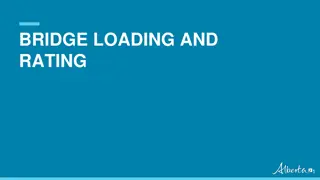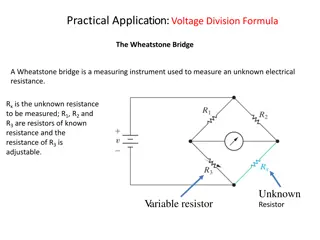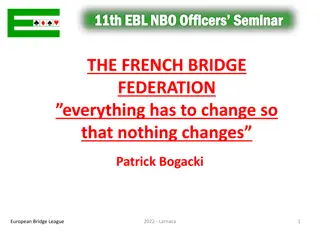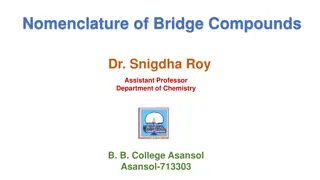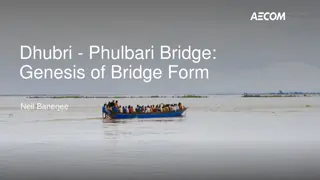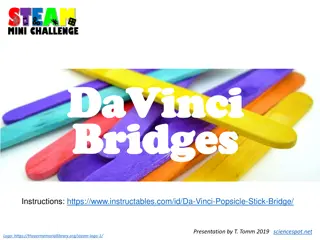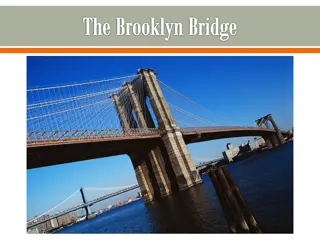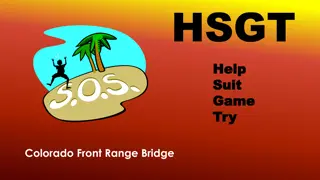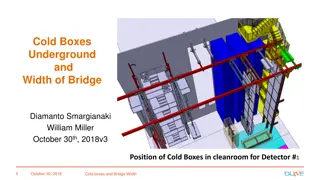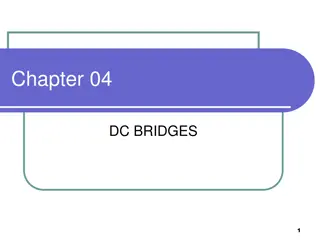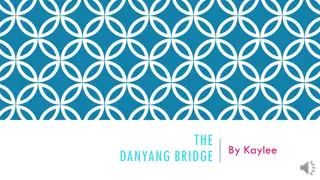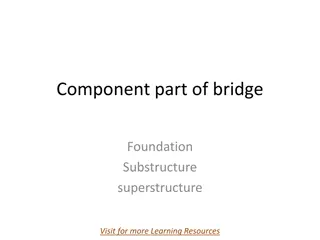
Akashi Kaikyo Bridge: Engineering Marvel and Environmental Impact
Discover the incredible Akashi Kaikyo Bridge, a technological masterpiece connecting Kobe and Awaji-shima island. Learn about its design, features, extreme conditions it faces, and its environmental impact. Explore the complex network of steel trusses, steel wires, and mass dampers used in its construction. Dive into fun facts and the challenges posed by water and noise pollution, habitat loss, and overcrowding of species due to this iconic bridge.
Download Presentation

Please find below an Image/Link to download the presentation.
The content on the website is provided AS IS for your information and personal use only. It may not be sold, licensed, or shared on other websites without obtaining consent from the author. If you encounter any issues during the download, it is possible that the publisher has removed the file from their server.
You are allowed to download the files provided on this website for personal or commercial use, subject to the condition that they are used lawfully. All files are the property of their respective owners.
The content on the website is provided AS IS for your information and personal use only. It may not be sold, licensed, or shared on other websites without obtaining consent from the author.
E N D
Presentation Transcript
The Akashi Kaikyo bridge
Some basic types of bridges Beam bridge Truss bridge Cantilever bridge Arch bridge Suspension bridge
Suspension bridge typical features: two main cables suspended from towers, concrete blocks or anchorages, roadway/and or railway on smaller vertical cables
Akashi Kaikyo Bridge (AKB) Location: between Kobe and Awaji-shima island Time: 1988 - 1998 Length: 3911 m Height: 282.8 m (the highest bridge tower) Longest span: 1991 m (the longest single span) Materials: steel, reinforced concrete Cost: 4.3 billion USD (the most expensive)
Extreme conditions frequent earthquakes (potential tsunamis) strong gale winds, storms and hurricanes deep water (sea bed deeper than 110m) heavy shipping traffic, length of the strait strong sea currents, heavy rains, dense fogs
Technological solutions complex network of steel trusses connected in triangular patterns a new type of steel wire (flexible, but incredibly strong) 20 mass dampers (to counteract strong winds and compensate for earthquake vibrations
- network of triangular braces - structural design - thickness of the main steel cable - size of a concrete foundation cylinder
Fun facts more than 300,000 km of steel wire (long enough to circle the Earth 7.5 times) 4 times longer than the Brooklyn bridge 180 mph winds, 8.5 on the Richter scale during the 8.5 Hanshin earthquake, it extended for 1 meter 23,000 cars per day each cable is 112 cm in diameter and contains 36,830 strands of wire.[5][6]
Environmental impacts water pollution - animal habitat loss - less food resources - overcrowding of species at one place (possible extinction of some species) noise pollution (caused by construction work and traffic) air pollution (smog from exhaust pipes, emission of CO2 and NO2)
Modern trends and tendencies proper management of natural resources to avoid depletion and ensure ecological balance (sustainability) bridge designs should be smart and efficient and should meet the following criteria: 1) selection of proper materials 2) prevent pollution 3) low maintenance cost 5) biodegradability after abandonment
Some terms and expressions to support with a truss- poduprijeti re etkom complex network of triangular braces- slo ena mre a trokutastih spona rigid connection- kruta, vrsta veza, spoj damper - amortizer to sway in the opposite direction- ljuljati u suprotnom smjeru center span- sredi nji luk susceptible to the influence of wind- podlo an utjecaju vjetra bending strength- otpornost na savijanje, savojna vrsto a lateral stability bo na stabilnost biodegradability bio-razgradivost



